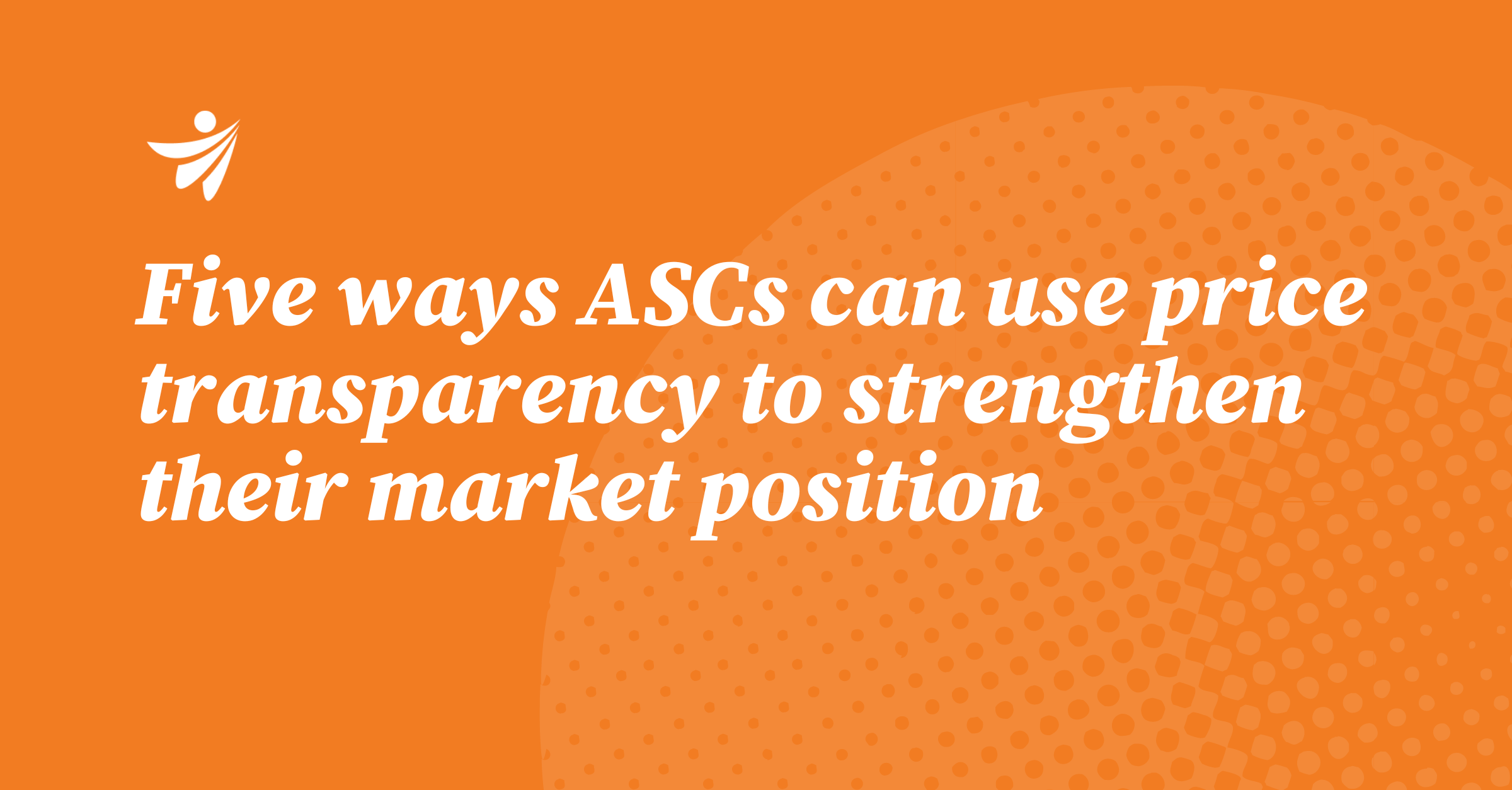
Price Transparency
Apr 18, 2024
Price Transparency | April 5, 2024
With new government-mandated price transparency regulations that require healthcare organizations to post their prices online, stakeholders across the industry including patients, providers, and payers, can leverage price insights to make more informed decisions. Health plans can leverage price transparency data to support critical business decisions, design and sculpt provider networks and create stronger partnerships with providers. By combining price data with provider performance data, health plans can better design networks to ensure patients have access to affordable, high-quality care. Here are three ways health plans can use price transparency data to their advantage. Using price transparency data, payers can identify cost-effective providers and services, ensuring that their network delivers high-quality care at a lower cost. This not only enhances the plan’s appeal to consumers but also positions it as a value-driven option in the marketplace. Health plans can use price transparency data to analyze the cost structures of different providers and services within their network. By comparing how providers structure the costs of their services against industry benchmarks and quality metrics, plans can make informed decisions about which providers to include or exclude from their network. Payers can also use these insights to negotiate better contracts with providers. Lower costs and higher quality make health plan products more attractive to consumers, leading to increased enrollment and retention. Furthermore, a well-designed network can enhance a health plan’s reputation in the market, driving further growth. Effective provider contract negotiations are essential for controlling costs and ensuring the sustainability of health plans. Accurate rate intelligence and price transparency data are critical to contract negotiations. Utilization and cost data can help drive negotiations with providers while helping to ensure that sustainability and profitability remain drivers for both sides. This data empowers payers with the information needed to negotiate more favorable terms, aligning provider rates with market standards and the value of services offered. Key to contract negotiations with providers is understanding where provider rates sit in relation to regional and national averages and rate and price transparency data can help appropriately benchmark provider rates. This helps identify those providers who are outliers and pinpoint where costs may be higher than average. Having this data in hand during negotiations can help justify proposed rates and incentives, ensuring contracts are both competitive and fair – from both the payer’s and provider’s perspective. Strategically using price transparency data fosters a collaborative approach to cost management and care quality and strengthens provider contract negotiations because both sides feel like they are getting value. This leads to more cost-effective agreements, which benefits the bottom line of health plans. When plans effectively negotiate for lower provider prices, those lower costs can be passed on to members in the form of lower premiums or better benefits. Lower premiums make plans more attractive to potential enrollees. In an increasingly competitive healthcare market, health plans need to demonstrate value through price transparency and cost-effective offerings to attract new members and hold on to the ones they have. When plans make it easier for members to make these decisions, it significantly increases satisfaction and trust. But these more engaged and empowered healthcare consumers still need user-friendly tools and platforms that allow them to easily access and understand price transparency data. Online price comparison tools that allow consumers to understand how much financial responsibility they have for a service or procedure are now required, but providing this information is simply good for business. Personalized cost-saving recommendations and incentives for using cost-effective providers demonstrate a plan’s commitment to value and their commitment to the member. When members can clearly see the value and quality of the care they are receiving, they are more likely to stick with their current health plan, and they are more likely to tell others about their experience. Positive word-of-mouth helps drive new member referrals. Likewise, a strong reputation for transparency and value can differentiate health plans from others in the market, driving long-term growth and member loyalty. Price transparency data is a treasure trove of potential for payers if leveraged effectively. Relationships and collaboration with providers are only strengthened through the effective use of data. It can help health plans optimize network design and craft the best experience and offerings for their members, strengthen contract negotiations with providers, and showcase value to current and potential members to help better position plans for growth. Strategy 1: Using price transparency data to optimize network design
Strategy 2: Leveraging rates data to strengthen provider contract negotiations
Strategy 3: Demonstrating value to attract and retain members
Positioning for plan growth